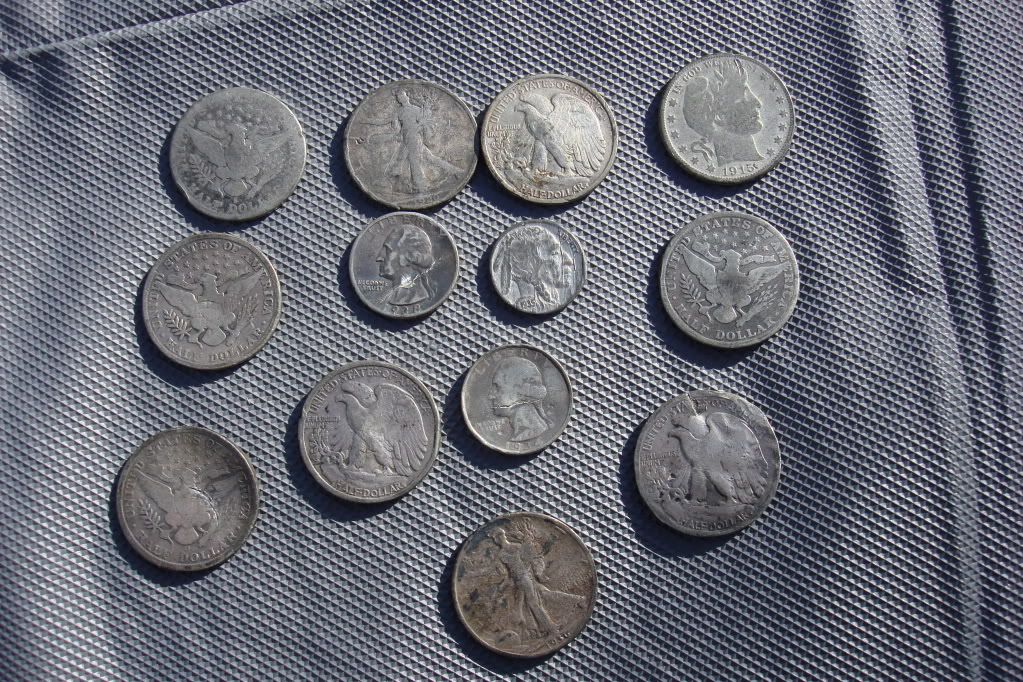Anyone know about contemporary counterfeits from the teens-30's? US
I know that folks collect collect these...A group of them were in an old canvas bag that came with a group of LG Size notes that I bought from a family that owned a grocery store from 1919-1940...
Anyone know about the value??
Thanks! Larry

Anyone know about the value??
Thanks! Larry


Liberty Loan Bond Man
0
Comments
Your photos (from a storekeeper's hoard, I think you said) would be very useful in part of a book I am working on. The buffalo, 1938 Washington and one of the better WL halves would be interesting illustrations.
I can provide appropriate photo credit in the book, samples of the final page layout, etc. PM me if interested.
Larry.
i highly discourage you to post a phone number on a public chat forum
www.brunkauctions.com
Hit the wrong button!
Interesting stuff for sure. How much real circulation wear is on these?
Worry is the interest you pay on a debt you may not owe.
"Paper money eventually returns to its intrinsic value---zero."----Voltaire
"Everything you say should be true, but not everything true should be said."----Voltaire
They are fairly common and don't demand too much of a premium (From experience, $5-15 is a fairly typical price range per piece).
Some look MUCH better than others, and the ones you are showing are rather nice.
Nice Buffalo Nickel counterfeits are tougher to find than the Barber and Walker Halves.
Nice group you have there Larry
The store was open during those tough times...
A 50 cent piece in 1933
today buys $8.43 in goods...
But why counterfeit a Nickle?
Larry
The nickel had quite a bit of buying power in those days, such as a hotdog, loaf of bread, etc.
A lower denomination is less suspect to counterfeit inspection than a larger denomination and could be passed by with relative ease.
The less likely scenario is that due to the large number of problems manufacturing Buffalo Nickels (i.e. planchet laminations), crude
counterfeit Buffalo Nickels may have been able to change hands with little notice.
There's several other reasons for counterfeiting smaller change, but the above are two common ideas
This is so incredibly interesting!
I will also share this with my students at MSU, we just finished a section on the Banking Holiday of 1933
compared to our current crisis...
Larry
http://www.bos.frb.org/about/pubs/closed.pdfText
Click on the text...
One thing to bear in mind... BE VERY CAREFUL HANDLING THESE COUNTERFEITS! It's important to remember that a lot of these are lead with Mercury used to "silver" them, this is pretty nasty stuff and you don't want to get Mercury into your system.
That being said.. think I have close to 20 fake Barber Halves and a handful of fake SLQs, some Walkers and even a fake 3 cent piece that's holed! Picked that up last week from my local B&M.
Roger, I'd love to see your book.. I can send you a list of what I have and will be happy to have said coins imaged for you.
Bill
Doggedly collecting coins of the Central American Republic.
Visit the Society of US Pattern Collectors at USPatterns.com.
Doggedly collecting coins of the Central American Republic.
Visit the Society of US Pattern Collectors at USPatterns.com.
Most appreciated! Larry
Yes the coins are all period fakes 1920's- 1940's...
Larry
where a lot of money was changing hands so they wouldn't be noticed. Like yours they
are often lead and damaged by someone checking to see if they are lead.
The depression does seem to be a sort of focal point for the origin of many of them and
few are dated later.
Assuming that the purchasing power of .50 in 1933 was $8.45 today... You could feed your family for a day if you were judicial with grocery purchases... Larry